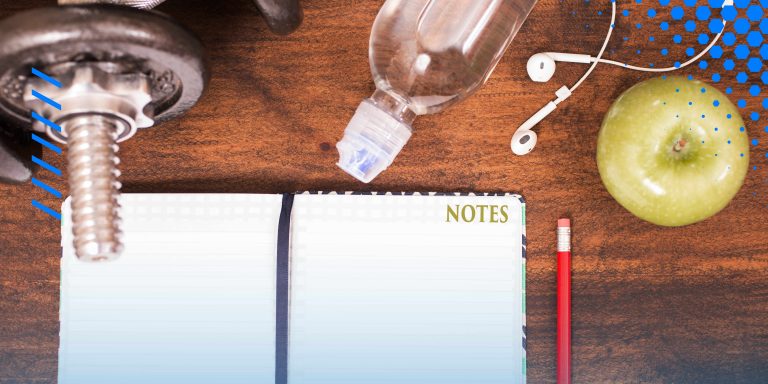Cutting - What Does It Mean in Fitness?
What does the term “cutting” mean when it comes to fitness? It is a question that many people ask, and there is no one-size-fits-all answer. However, cutting refers to dieting and training designed to help you lose fat while preserving muscle mass. It can be a complex process, but you can do it with the correct information and tools! This blog post will discuss the basics of cutting and provide some tips for getting started.
What is cutting mean in fitness, and why do people do it?

When it comes to fitness, cutting refers to a specific type of weight loss diet. The goal of cutting is to reduce body fat while preserving muscle mass. To do this, people typically eat fewer calories and do more cardio exercise. Cutting can be helpful for people who want to lose weight and achieve a leaner body composition. It can also benefit athletes who need to make weight for competitions. However, cutting is not without its risks. If not done correctly, it can lead to muscle loss and other adverse side effects. Therefore, it’s essential to speak with a doctor or certified nutritionist before starting a cutting diet.
What are the benefits of cutting?

The benefits of cutting include weight loss, a reduction in body fat, and preservation of muscle mass. Cutting can also help improve athletic performance by increasing the power-to-weight ratio. In addition, cutting can help reduce the risk of obesity-related diseases such as type II diabetes and heart disease.
What are the risks of cutting?

The risks of cutting include muscle loss, dehydration, electrolyte imbalances, and decreased athletic performance. Cutting can also lead to disordered eating behaviors such as orthorexia and anorexia. Therefore, it’s essential to speak with a doctor or certified nutritionist before starting a cutting diet.
How do I start cutting?

If you’re interested in starting a cutting diet, the first step is to speak with a doctor or certified nutritionist. They can help you create a safe and effective plan for you. Once you have a plan, you’ll need to stick to it! It means following your calorie intake and exercise goals. It’s also important to stay hydrated and get enough sleep. Finally, make sure to monitor your progress so you can make adjustments as needed.
What are the basics of cutting, including diet and training tips

Anyone who stepped on a scale knows that weight loss isn’t always easy. In addition to lifestyle changes, such as eating a healthy diet and getting regular exercise. For many, that means cutting their hair. While a shorter hairstyle may not seem like a significant change, it can be challenging physically and mentally. Here are a few tips to help you cut:
- Set realistic expectations. Remember that hair grows back, so don’t be too disappointed if your new style doesn’t look exactly as you envisioned.
- Choose the right stylist. Find someone you trust who has experience cutting the type of hairstyle you want.
- Be prepared for odd looks and comments. Unfortunately, not everyone will be a fan of your new look. Just ignore the haters and focus on how good you feel about yourself.
- Stay positive. Getting a haircut is a significant change, but it’s also an opportunity to start fresh. Embrace it!
How can you track your progress while cutting?

There are a few different ways to track your progress while cutting in fitness. One way is to keep a journal and write down how you feel each day, what exercises you did, and how many reps you did. You can also take photos of yourself to compare your progress over time. Another way to track your progress is to use a tracking app like Fitbit or MyFitnessPal. These apps can help you track your calorie intake, exercise routine, and weight loss over time. Finally, you can also ask your doctor or a personal trainer to help you track your progress. They will be able to give you specific feedback on your performance and whether or not you are meeting your goals.
What should you do if you hit a plateau while cutting?
Hitting a plateau is frustrating, but it’s important to remember it’s normal. Here are a few things you can do if you find yourself stuck:
- First, take a step back and reassess your goals. Please make sure they’re realistic and that you’re including all the critical aspects of cutting (diet, exercise, etc.).
- Next, try mixing up your routine. If you’ve been doing the same workout for weeks, try something new to keep your body guessing.
- Finally, don’t forget to rest! Getting enough sleep and recovery time is crucial when trying to lose weight.
If you follow these tips, you should be able to get past your plateau and continue making progress.
FAQS about Cutting in Fitness
There’s a lot of Cutting in Fitness, and it can be tough to keep track of all the different terms and what they mean. Here are some of the most common questions we get about Cutting in Fitness:
What should I eat while Cutting?
A healthy diet is essential for anyone looking to lose weight, regardless of their strategy. When Cutting, you should focus on eating lean proteins, vegetables, fruits, and whole grains. Avoid processed foods, sugary drinks, and excessive amounts of saturated and unhealthy fats.
What type of exercise should I do while Cutting?
The best type of exercise for Cutting is a mix of cardio and strength training. Cardio will help you burn calories, while strength training will help you build muscle and improve your body composition.
How long should I Cut?
The length of time you Cut for will depend on your goals. If you’re trying to lose a lot of weight, you may need to Cut for several months. However, if you’re trying to lose a few pounds, you may only need to Cut for a few weeks.
When should I start Cutting?
The best time to start Cutting is when you’re ready to commit to making a change. There’s no perfect time, so start whenever you’re feeling motivated to make a change.
Conclusion
So, what does cutting mean in fitness? Cutting is the process of losing body fat while maintaining muscle mass. It can be achieved through a combination of diet and exercise. It would help if you created a calorie deficit by eating fewer calories than you burn each day to cut. You can do this by reducing your intake and increasing your activity level. When done correctly, cutting can help you lose weight and improve your health.



